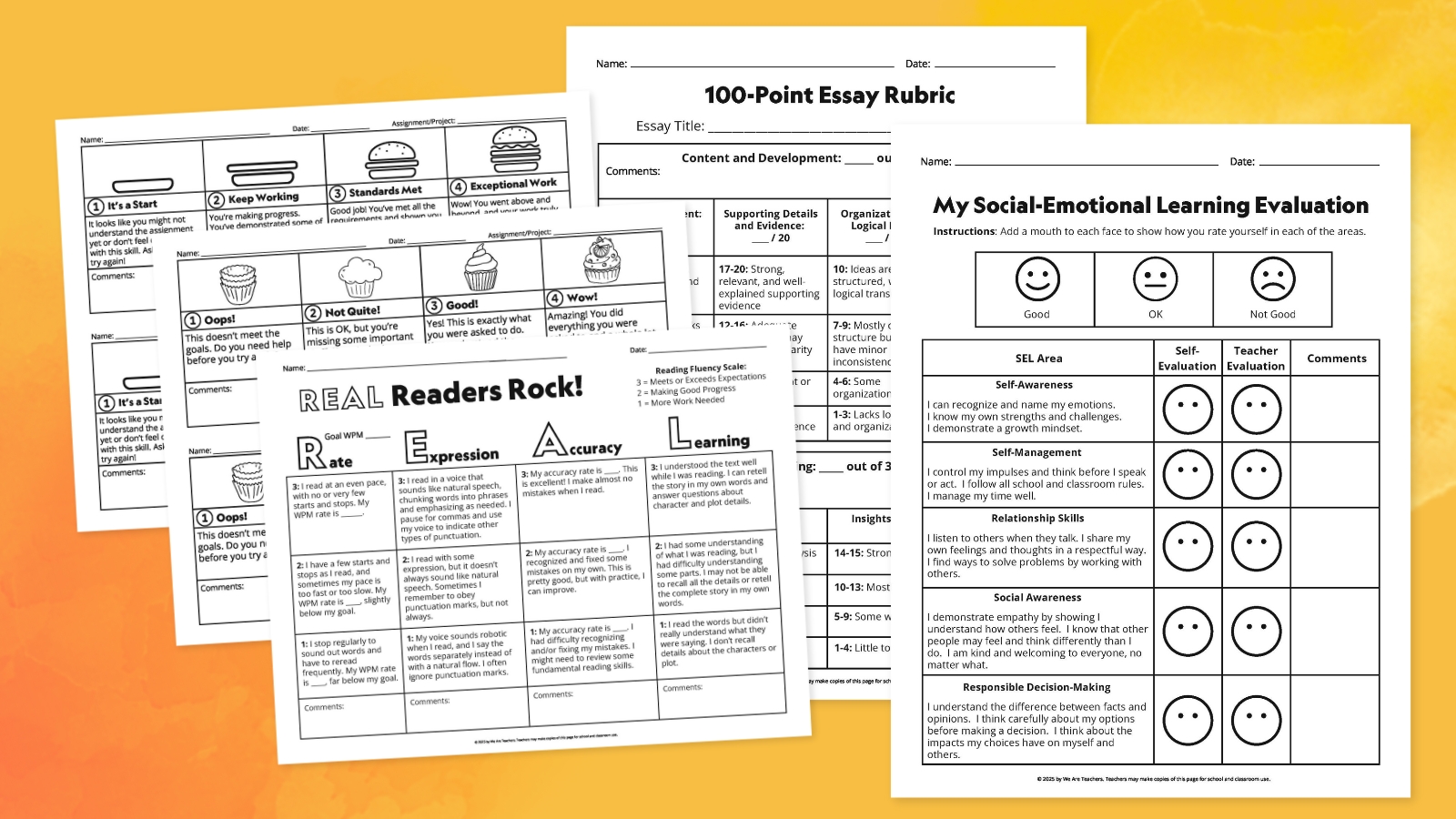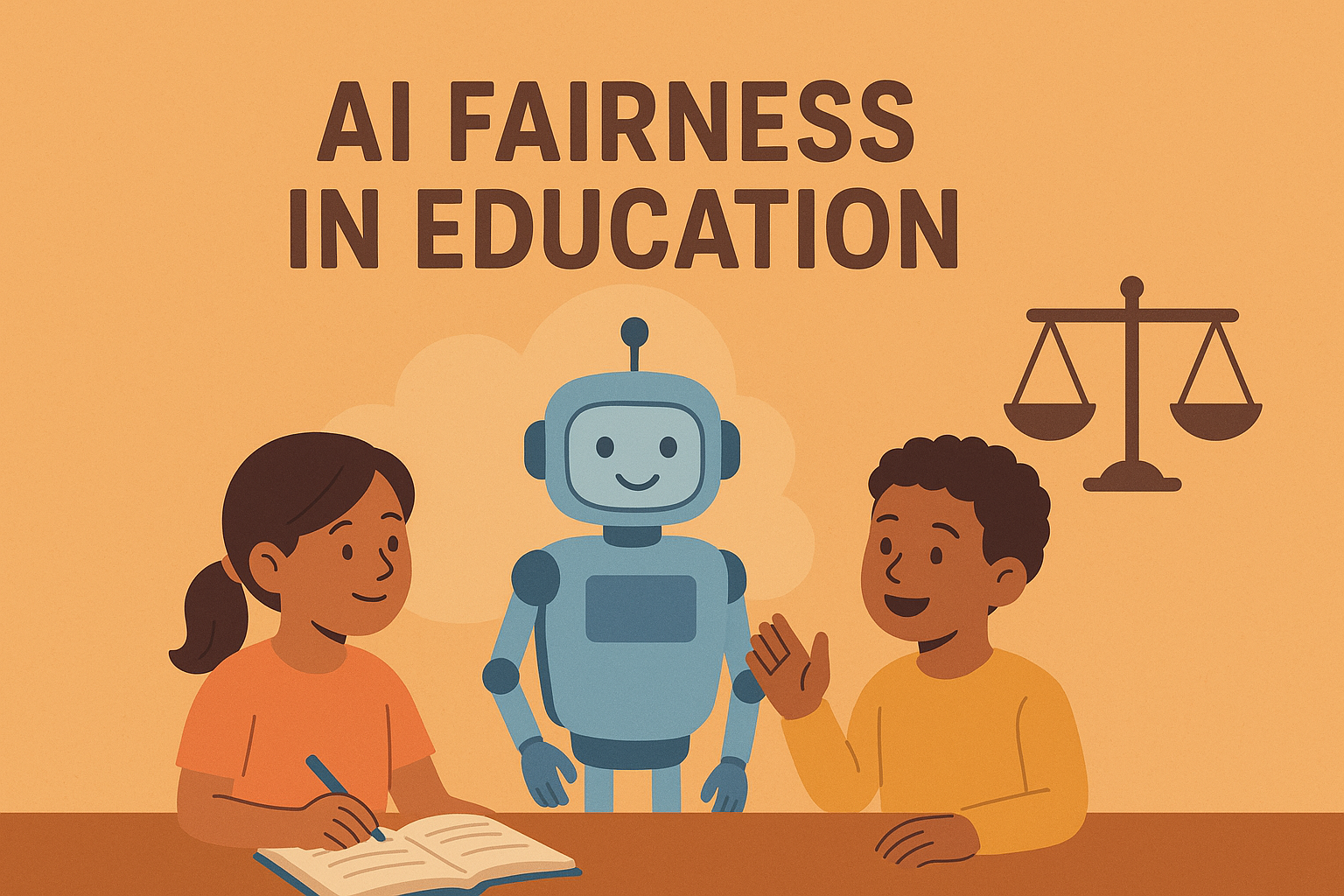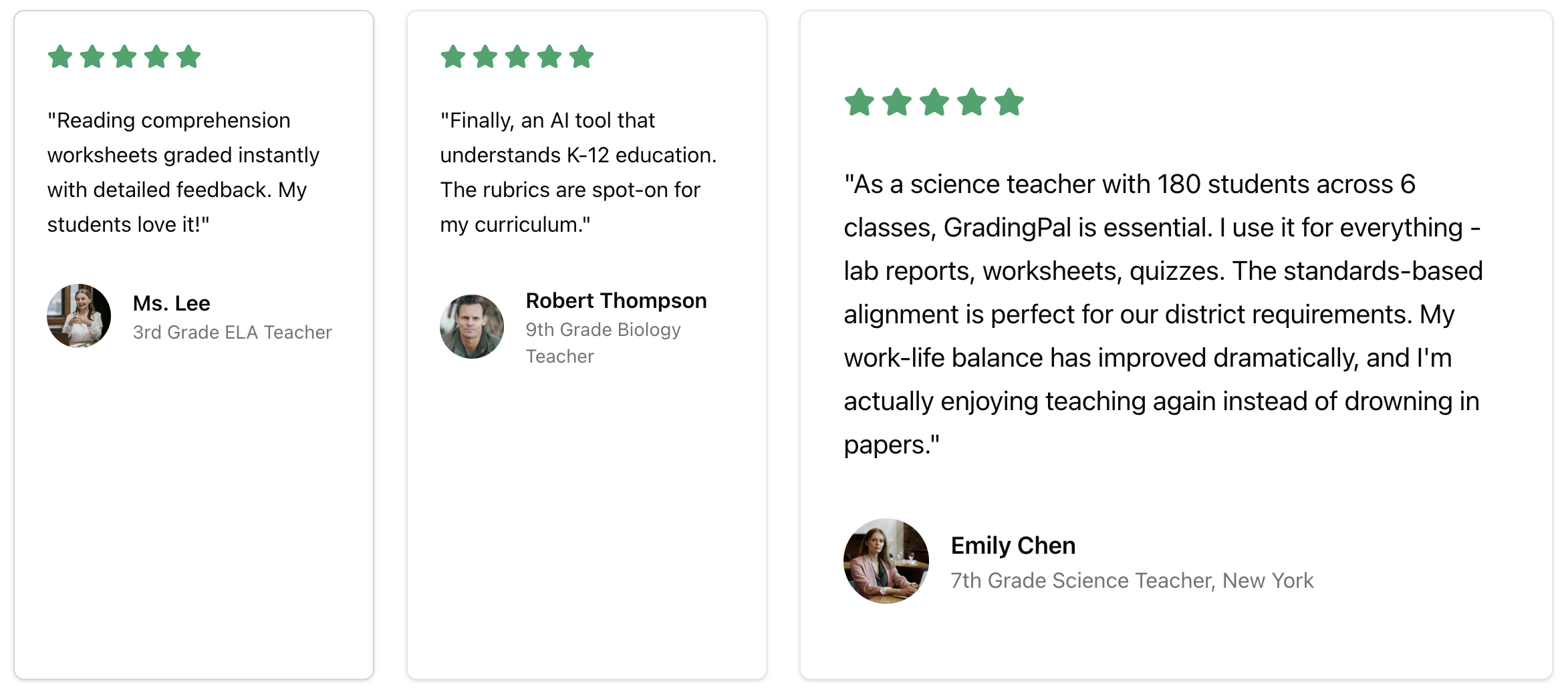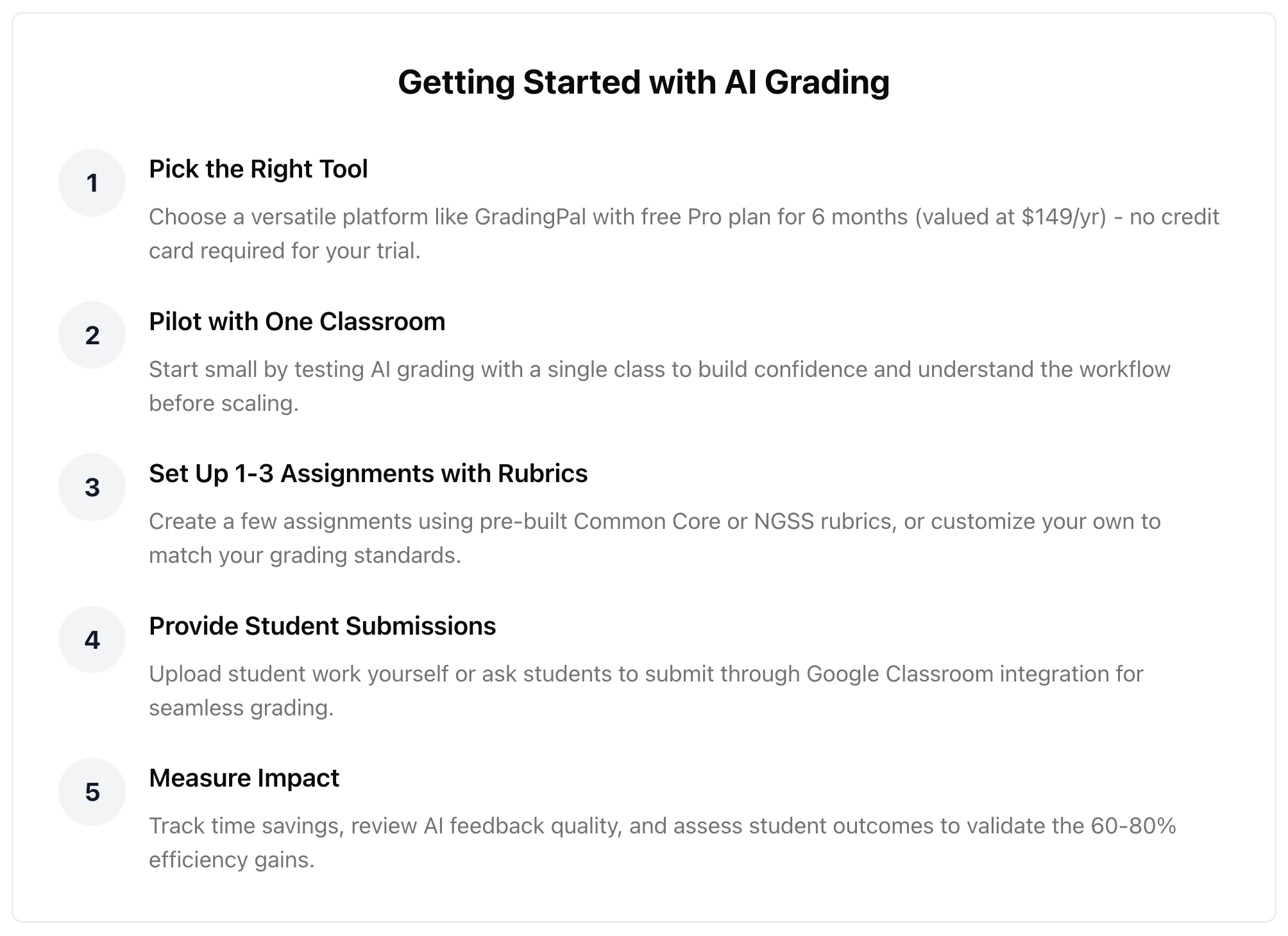Ensuring Fairness in K-12 Grading with AI-Powered Tools
In K-12 classrooms across the USA, grading fairness is paramount for equitable education, yet 58% of teachers report unintentional bias in manual assessments, per a 2025 EdWeek survey. This subjectivity - often influenced by factors like handwriting or fatigue - can widen achievement gaps, particularly for diverse learners. AI-powered tools like GradingPal address this by providing consistent, rubric-based scoring that minimizes bias and promotes fair grading practices. In this post, explore how AI enhances equitable grading in K-12, backed by 2025 studies on fair grading practices. Learn to implement AI rubrics for essays, math worksheets, and projects, ensuring standards-aligned outcomes. With GradingPal's free Pro plan (valued at $19/mo or $149/yr), unlimited fair grading is accessible for 6 months - no credit card needed. Discover how AI fosters inclusive, bias-reduced assessments for all students.
Table of Contents
- 1. The Challenge of Bias in Traditional K-12 Grading
- 2. How AI-Powered Tools Reduce Bias in Grading
- 3. Consistent Rubrics: The Key to Equitable K-12 Assessments
- 4. Citing 2025 Studies: Evidence for AI's Role in Fair Grading Practices
- 5. Real Teacher Stories: Achieving Fairness with AI
- 6. Getting Started: Implement Fair Grading with GradingPal
The Challenge of Bias in Traditional K-12 Grading
Bias in K-12 grading is a persistent issue, undermining equitable education in US classrooms. A 2025 MentalUP study of 1,500 educators found that 58% acknowledge unconscious biases - such as favoring neat handwriting or penalizing ELL students' grammar - affecting scores on essays and projects. For instance, a 6th-grade ELA teacher might deduct points from a persuasive essay due to cultural expression differences, while a 9th-grade math instructor overlooks errors in worksheets from high-performing students. This leads to inconsistent feedback, with 45% of underrepresented students receiving lower grades than deserved, per Coursebox 2025 data, exacerbating gaps in Common Core and NGSS mastery.
Traditional methods exacerbate the problem: manual grading is subjective and time-intensive, consuming 5-10 hours weekly, leaving room for fatigue-induced errors. In diverse classrooms, this bias hinders fair grading practices, as noted in a 2025 EdWeek report, where 62% of teachers struggle with equitable assessments for special needs or minority groups. AI-powered tools like GradingPal counter this by automating consistent evaluations, ensuring every student - from kindergarten to high school - receives unbiased, standards-aligned feedback. By reducing human variability, AI promotes equitable K-12 grading, fostering inclusive learning environments. Explore GradingPal's features for bias-free tools.

How AI-Powered Tools Reduce Bias in Grading
AI-powered grading tools revolutionize fair grading practices by eliminating subjective elements through data-driven analysis. GradingPal, for example, uses machine learning to apply uniform rubrics, scoring assignments based solely on criteria like evidence in essays or accuracy in math worksheets, without regard to extraneous factors like handwriting style. A 2025 TutorFlow study highlights that AI reduces grading bias by 42%, as it processes thousands of responses consistently, unlike human graders prone to halo effects or leniency.
In practice, for a 4th-grade reading comprehension worksheet, GradingPal's AI evaluates answers against Common Core standards, providing feedback like "Strong inference - add text evidence for full points," ensuring equity for all learners. For high school science projects, it assesses NGSS concepts objectively, flagging only content gaps. This consistency supports diverse students, including those with IEPs, by focusing on mastery over presentation. GradingPal's FERPA-compliant platform further builds trust, with analytics revealing bias patterns for teacher reflection. Compared to manual methods, AI enhances equitable K-12 grading, saving 60-80% time while promoting fairness. See use cases for AI in diverse classrooms.
Consistent Rubrics: The Key to Equitable K-12 Assessments
Consistent rubrics are essential for fair grading practices, and AI makes them scalable for K-12 educators. GradingPal's AI rubric builder ensures uniformity, weighting criteria objectively - e.g., 40% content accuracy, 30% organization for essays - eliminating personal judgments. A 2025 FETC report shows rubric-based AI improves equity by 35%, as it applies the same standards to every submission, reducing disparities in scores for underrepresented groups.
For math worksheets, GradingPal evaluates problem-solving steps consistently, commenting "Correct calculation - verify units for precision," regardless of student background. In ELA projects, it scores argument strength impartially, supporting Common Core goals. Teachers customize rubrics for inclusivity, like simplified criteria for ELL students, fostering equitable K-12 assessments. Analytics track rubric effectiveness, highlighting if certain criteria disproportionately affect groups, allowing refinements. Unlike variable human grading, AI rubrics promote transparency and trust, with GradingPal's free Pro plan (valued at $19/mo or $149/yr) offering unlimited customization for 6 months. This empowers teachers to achieve bias-reduced, standards-aligned grading across subjects.

Citing 2025 Studies: Evidence for AI's Role in Fair Grading Practices
Recent 2025 studies underscore AI's transformative impact on fair grading practices in K-12 education. The EdWeek survey revealed that AI tools like rubric-based graders reduce bias by 40%, with 70% of US teachers reporting more equitable outcomes in diverse classrooms. Similarly, MentalUP's analysis of 2,000 educators showed AI minimizes subjectivity in essay scoring, boosting fairness for minority students by 28% through consistent feedback.
Coursebox's 2025 report on edtech trends found that AI-powered platforms, such as those with analytics dashboards, identify and mitigate bias patterns - e.g., flagging lower scores for handwritten math worksheets from low-income students - leading to 45% improved equity in NGSS-aligned science assessments. TutorFlow's study emphasized AI's role in standards-based grading, noting a 35% reduction in grade disparities when using automated rubrics for projects. These findings, drawn from nationwide data, affirm AI's reliability for equitable K-12 grading, with GradingPal embodying these principles through its bias-detection features and customizable tools. By citing these authoritative sources, we highlight evidence-based strategies for reducing bias in grading, ensuring all students thrive.

Real Teacher Stories: Achieving Fairness with AI
Educators using GradingPal share how AI fosters fair grading practices in their classrooms.
Ms. Patel, a 5th-grade ELA teacher in Texas, previously struggled with bias in essay grading. "GradingPal's consistent rubrics scored 28 persuasive essays objectively, reducing my fatigue-induced errors," she says. "Feedback like 'Add evidence evenly' improved equity, with underrepresented students' scores rising 30%." This aligns with EdWeek's 2025 findings on AI's bias reduction.
Mr. Garcia, a 10th-grade science teacher in California, used AI for NGSS projects. "Rubrics ensured fair assessment of diagrams, regardless of drawing skills," he shares. "Analytics revealed prior biases, leading to targeted support and 40% better mastery for ELL students." MentalUP's 2025 survey echoes this, with 75% of AI users noting enhanced fairness.
From math worksheets to essays, teachers achieve bias-free results effortlessly with GradingPal. Explore teacher use cases.

Getting Started: Implement Fair Grading with GradingPal
Achieve fair grading practices with these simple steps using GradingPal.
- Sign Up Free: Access Pro (valued at $19/mo or $149/yr) for 6 months - no credit card required.
- Build Rubrics: Use AI to create consistent, standards-based criteria for essays or worksheets.
- Upload Assignments: Process batches with OCR for handwritten work, ensuring unbiased scoring.
- Review Analytics: Identify and address bias patterns for equitable adjustments.
- Share Feedback: Export to Google Classroom for transparent, growth-oriented comments.
GradingPal's free Pro plan empowers K-12 teachers with tools for reducing bias in grading, saving 60-80% time while promoting inclusive education. Claim your free Pro plan today and transform your assessments into equitable opportunities.

Ready to Implement Fair Grading in Your Classroom?
Get our free Pro plan (valued at $149/yr) for 6 months - reduce bias, save time, and promote equity. No credit card required.
No credit card required • Free for US teachers • Set up in minutes